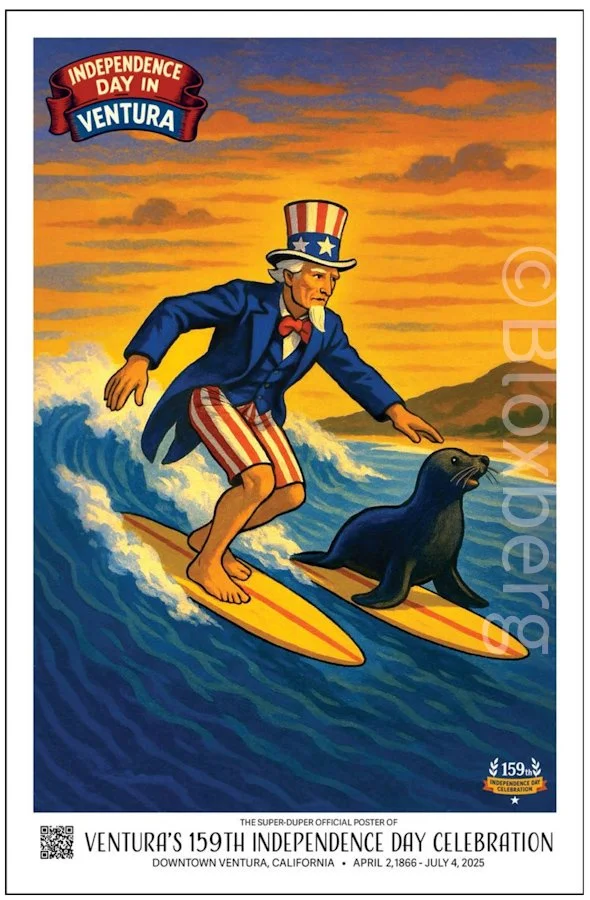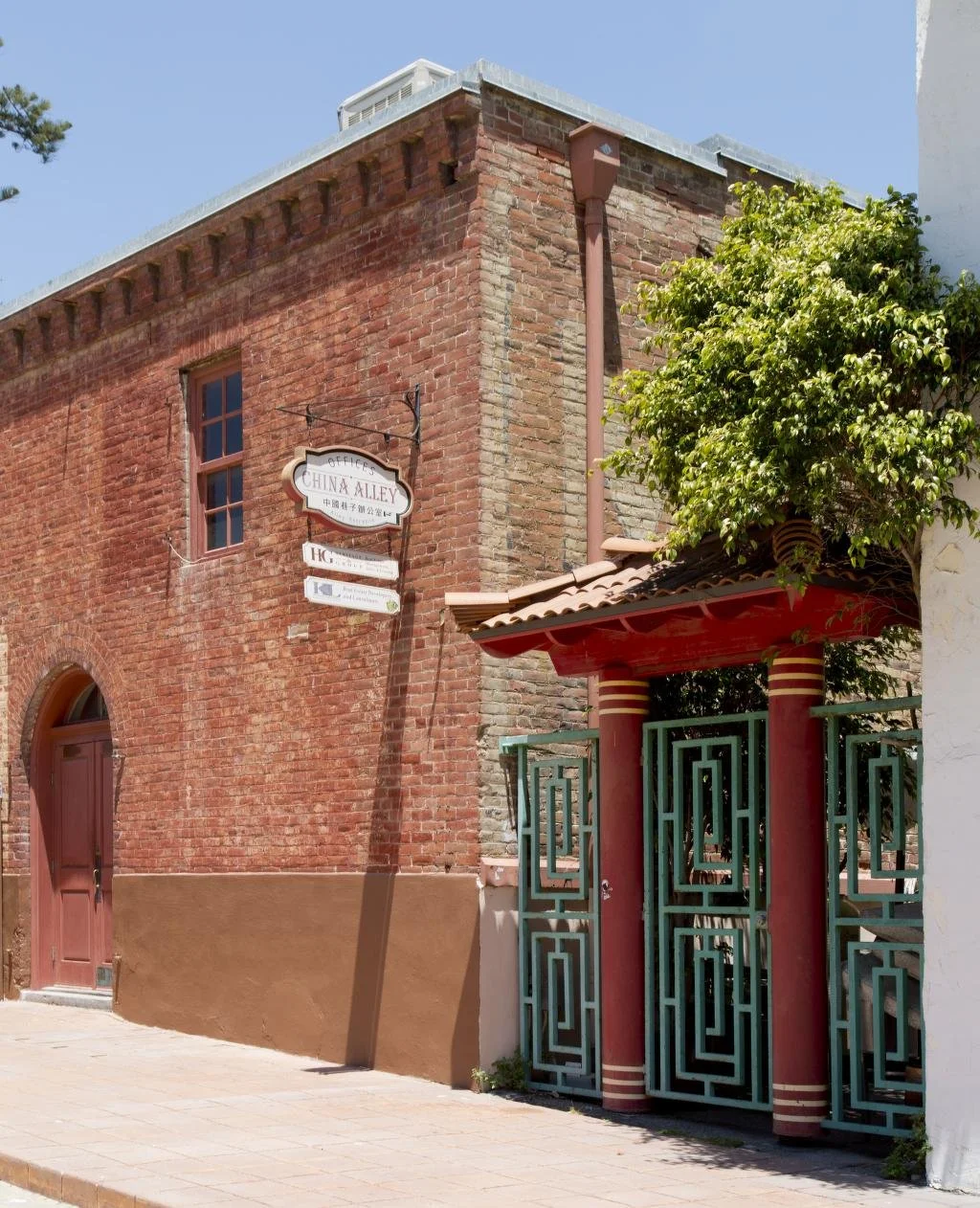Celebrate the 4th of July In Ventura
Limited Edition
Made in America.
Celebrate the spirit of freedom—California style—with this silly poster honoring Ventura’s 159th Independence Day Celebration. We all need a little silly to releave us from the stress right now.
Designed in the style of a vintage WPA travel poster, this 11'“x17” full-color collectible features Uncle Sam surfing alongside a sea lion at sunset … an unforgettable image capturing the fun, freedom, and energy of Ventura, California on July 4th.
Details:
Size: 11” x 17”
Premium, thick archival paper
**Poster ships without "©Bloxberg" watermark**
Or $20 at:
Palermo Coffee & Gifts, 321 E Main St, Ventura, CA 93001
SpiceTopia, 576 E Main St, Ventura, CA 93001
Seniors Craft Shoppe, 429 E Main St, Ventura, CA 93001
A Totally Unreliable and Wildly Exaggerated History of Ventura, California (1866–2025)
Ventura, California, officially incorporated on April 2, 1866, after several local ranchers mistook a “City Charter” for a restaurant menu and accidentally signed it. Thus began the accidental founding of what would become the weirdest beachfront town west of Bakersfield.
The town was built around the historic Mission San Buenaventura, which early residents used mostly as a backdrop for duels, amateur theater, and the annual “Guess What’s in the Friar’s Robe” scavenger hunt. Things remained relatively calm until the Great Clown Migration of 1879. A traveling circus broke down just outside town when its wagon wheels were stolen by coyotes—again. Stranded, the troupe of midget clowns (led by their fearless leader, Captain Chuckles Shortstack) decided to settle in Ventura permanently. They founded the Clown Quarter, a tiny neighborhood of smaller-than-average houses, built entirely from abandoned juggling pins and squeaky shoes.
At this point, we encourage you, dear reader, to visit Ventura City Halls history of our beautiful city. But read on if you wish. :)
Ventura has been famous for clowns since 1879.
Around the same time, a secretive Chinese mah-jongg group known as “The Jade Dragons” began holding tournaments in the back room of the Old Fox Theater, which was accessed via China Alley. These meetings were so intense that one round lasted three weeks and caused two minor spiritual awakenings and one spontaneous haircut. Rumors spread that they were playing not just for points—but for control of Ventura’s fog.
The real China Alley in Ventura, CA.
Then came 1894 and The War on California Street—an event still whispered about by local historians and loud barflies. The conflict began when rival barbers—Big Earl and Tiny Tito—disagreed over the town’s official mustache style. Words were exchanged. Then scissors. Then pies. Soon, the entire street devolved into a three-day melee involving barbers, clowns, mah-jongg players, two disgruntled poets, and one elderly woman armed with a rolling pin and terrible intentions. The war ended when a city clerk accidentally declared a truce by falling off a balcony holding a white sheet.
Ventura in the 20th century was a hotbed of innovation and confusion. In 1932, the city banned left turns on odd-numbered days to combat rising seagull aggression. During the '60s, Ventura flirted with becoming the “Yogurt Capital of the World,” until Santa Barbara called dibs. In response, Ventura renamed itself “The Place With Fewer Celebrities But More Opinions.”
During the ’80s, the clowns staged a brief political coup and legally changed all street names to balloon animals. It lasted 72 hours before the mah-jongg society seized power and renamed everything again—this time in Cantonese tiles. The DMV gave up entirely.
In modern times, Ventura is known for its beaches, breweries, and that guy on Main Street who swears he invented surfing “before it was cool.” As we celebrate Ventura’s 159th birthday, we remember a city forged in confusion, governed by clown councils, and held together by mah-jongg strategy, facial hair disputes, and an unrelenting belief that if it’s weird, it belongs here.
God bless Ventura. May its fog always be dramatic, its streets slightly crooked, and its clowns forever short, but proud.



